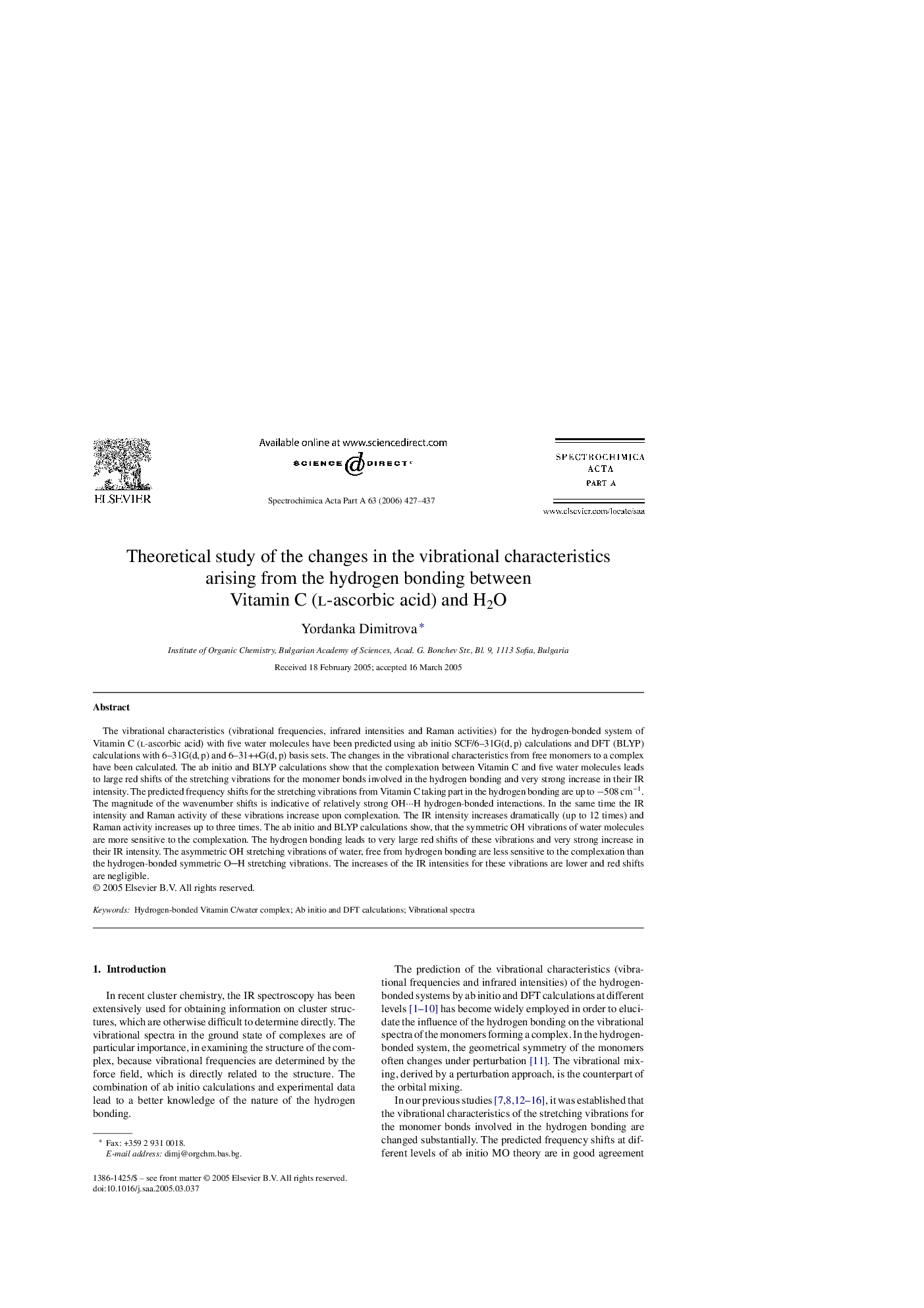| Article ID | Journal | Published Year | Pages | File Type |
|---|---|---|---|---|
| 1238801 | Spectrochimica Acta Part A: Molecular and Biomolecular Spectroscopy | 2006 | 11 Pages |
The vibrational characteristics (vibrational frequencies, infrared intensities and Raman activities) for the hydrogen-bonded system of Vitamin C (l-ascorbic acid) with five water molecules have been predicted using ab initio SCF/6–31G(d, p) calculations and DFT (BLYP) calculations with 6–31G(d, p) and 6–31++G(d, p) basis sets. The changes in the vibrational characteristics from free monomers to a complex have been calculated. The ab initio and BLYP calculations show that the complexation between Vitamin C and five water molecules leads to large red shifts of the stretching vibrations for the monomer bonds involved in the hydrogen bonding and very strong increase in their IR intensity. The predicted frequency shifts for the stretching vibrations from Vitamin C taking part in the hydrogen bonding are up to −508 cm−1. The magnitude of the wavenumber shifts is indicative of relatively strong OH···H hydrogen-bonded interactions. In the same time the IR intensity and Raman activity of these vibrations increase upon complexation. The IR intensity increases dramatically (up to 12 times) and Raman activity increases up to three times. The ab initio and BLYP calculations show, that the symmetric OH vibrations of water molecules are more sensitive to the complexation. The hydrogen bonding leads to very large red shifts of these vibrations and very strong increase in their IR intensity. The asymmetric OH stretching vibrations of water, free from hydrogen bonding are less sensitive to the complexation than the hydrogen-bonded symmetric OH stretching vibrations. The increases of the IR intensities for these vibrations are lower and red shifts are negligible.
